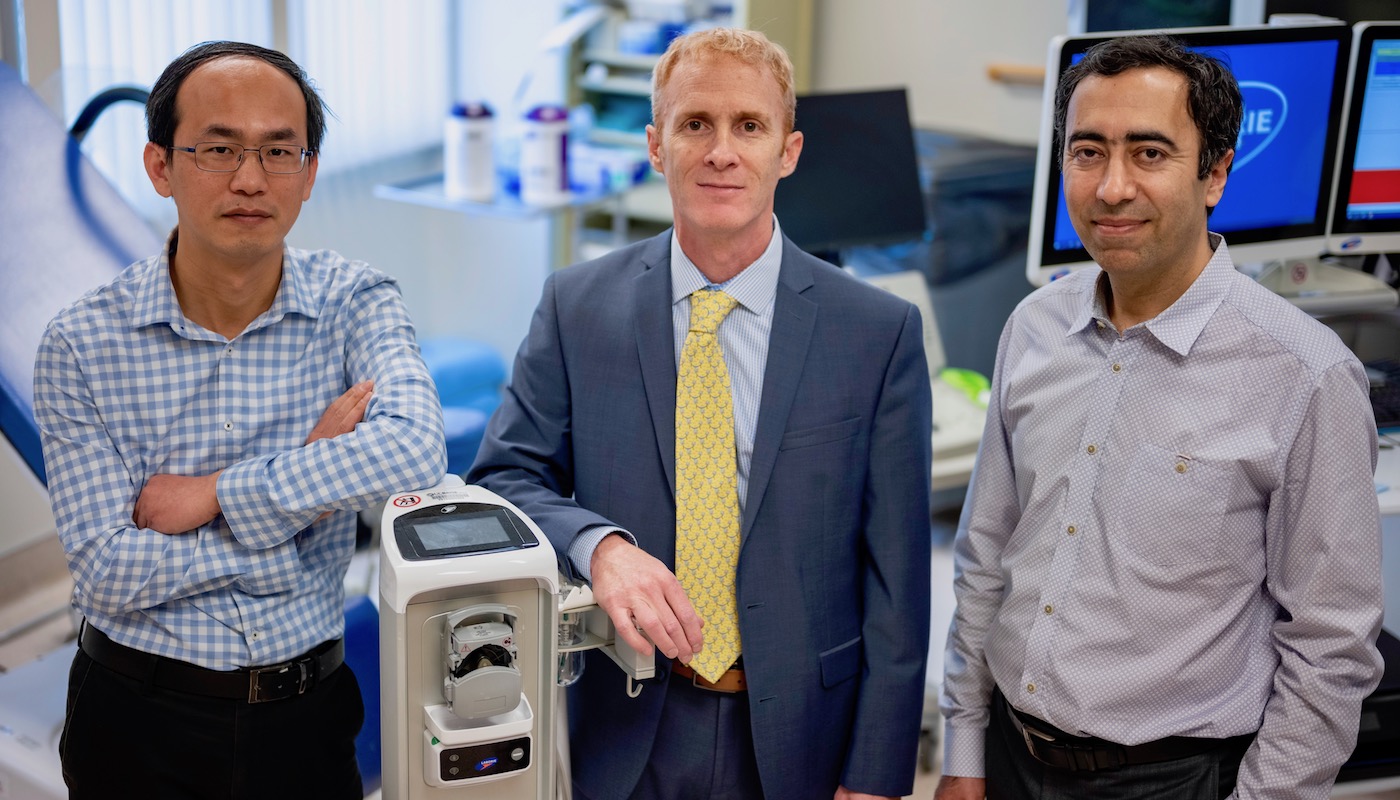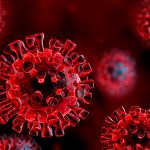Wearable Device Assists People with Spinal Cord Injuries
By Lisa Howard
UC Davis medical and engineering experts are teaming up to develop an under-clothing biosensor that can recognize in real time when someone’s bladder is full. Most people take that kind of biological awareness for granted, but it is lacking for the approximately half a million individuals in the United States with spinal cord injuries or spinal anomalies.
Those with neurogenic bladders — conditions in which bladder control is lost due to brain, spinal cord or neurologic problems — have to rely on a schedule rather than actual volume to empty their bladders. Many use catheterization, inserting a sterile catheter to drain the bladder into a bag, four to six times per day.
But relying on a clock, instead of actual volume, can lead to leaking or more serious problems, such as when urine volume unknowingly builds up in the bladder. “You can get high pressure in the bladder pushing upwards, which can lead to kidney failure,”said Eric Kurzrock, chief of Pediatric Urologic Surgery and a professor in the UC Davis Department of Urologic Surgery and Pediatrics.
Kurzrock is working with Soheil Ghiasi, a professor in the Department of Electrical and Computer Engineering. One of Ghiasi’s areas of expertise is embedded computing, bringing together the physical and cyber world for dedicated applications.
Also on the team is Lifeng Lai, an associate professor in the Department of Electrical and Computer Engineering who specializes in machine learning and stochastic signal processing — working with signals that have uncertainty or may appear random.
The project received seed funding in 2017 from CITRIS, the accelerator program designed to advance University of California innovations, and a UC Davis Science Translation and Innovative Research grant in 2018. In February 2020, the team received a $389,926 award from the National Science Foundation (NSF) to continue developing and testing the device.
Wearable device can alert wearer or caregiver
Ghiasi described how the noninvasive sensor will combine several sensing modalities, such as ultrasound, resonance sensing and light, to tell if a bladder is full or empty.
For example, the wearable device shines short bursts of near-infrared lights into the bladder. Detectors on the same device track and analyze how much of that light bounces back. Because water absorbs more light than the surrounding tissue, less and less light makes it back to the sensors as the bladder fills. Several such sensing modalities will be combined to monitor the bladder, which can then trigger a notice for the wearer or caregiver.
“The goal is to restore the ability to recognize bladder fullness in patients with spinal cord injury,” said Ghiasi. “This allows them or their caregivers to plan bathroom trips when they are actually needed and be able to avoid incontinence or health complications from an over-full bladder.”
Bladder sizes, shapes and locations vary greatly — a child’s bladder, for example, is located more forward in the abdomen than an adult’s — so the device will need to adapt to each person’s unique physique. And because it’s wearable, the biosensor may not end up in the exact same spot every day. To accommodate the wide range of variabilities, the team is using artificial intelligence algorithms to predict and monitor location, bladder size and volume.
Although it is being designed for people with spinal cord injuries or anomalies, it may have broader applications as well. Additional health conditions that can affect bladder function include diabetic neuropathy, Parkinson’s disease, Alzheimer’sdiseaseand multiple sclerosis.
The proof-of-concept studies have been promising. With the current NSF grant, the team will continue to refine the prototype and undertake new studies on people with and without spinal cord injuries or anomalies.
The University of California has filed a patent for Ghiasi and Kurzrock’s innovation, “System, device and method for bladder volume sensing.” The grant is supported through NSF award No. 1937158.
Media contacts
- AJ Cheline, UC Office of Research, 530-752-1101, [email protected]
- Soheil Ghiasi,Department of Electrical and Computer Engineering, [email protected]
Resources
- Laboratory for Embedded and Programmable Systems
- UC Davis InnovationAccess
- UC Davis Science Translation and Innovative Research (STAIR) Grant Program
- Media kit
Latest News & Events







